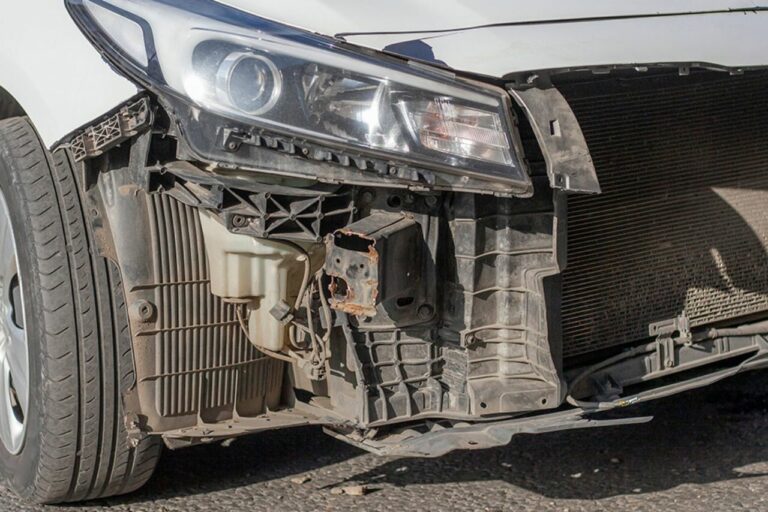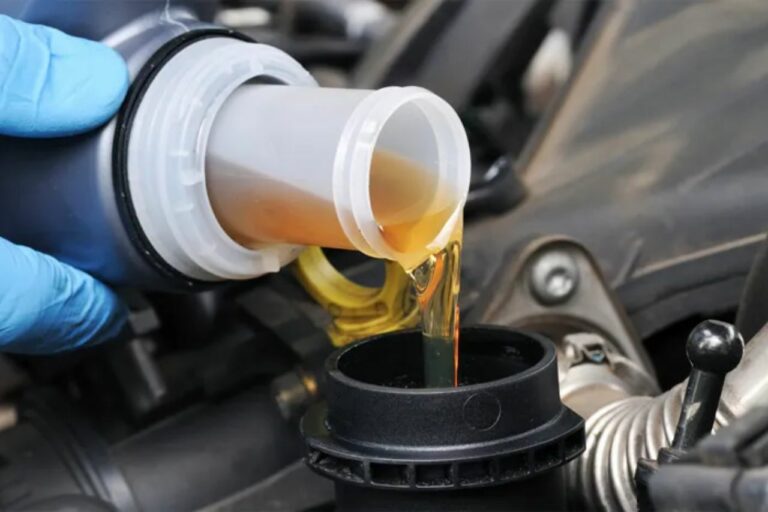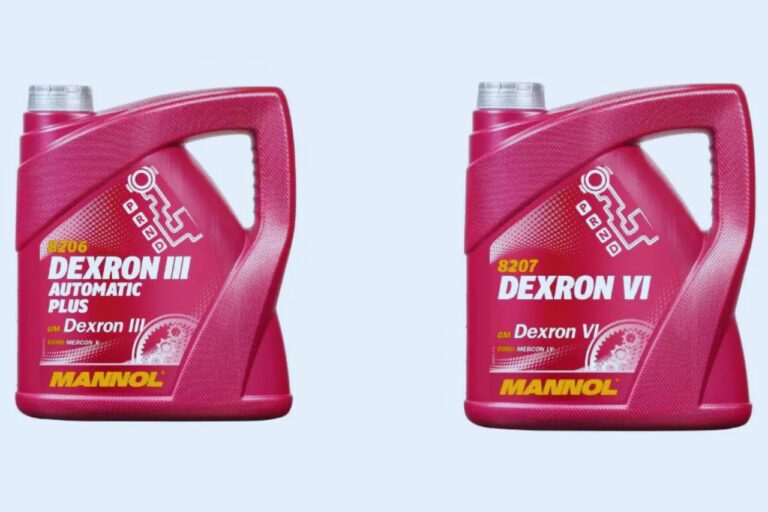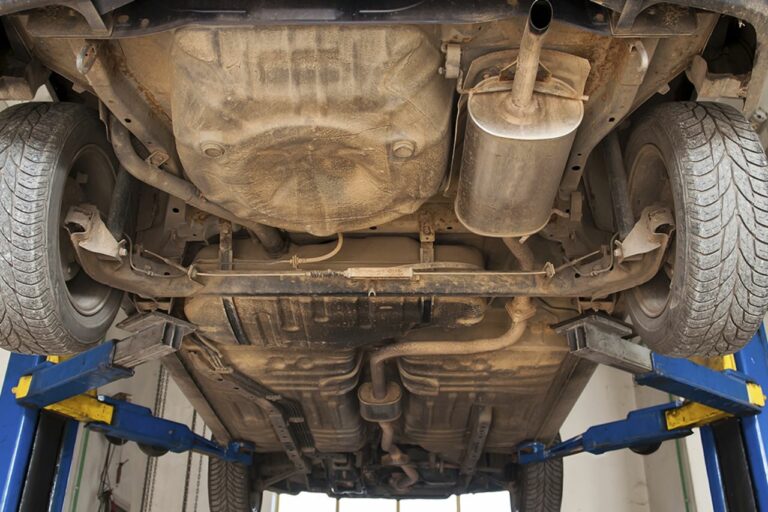Can You Twin-Turbo A Four-Cylinder? (The Truth Revealed!)
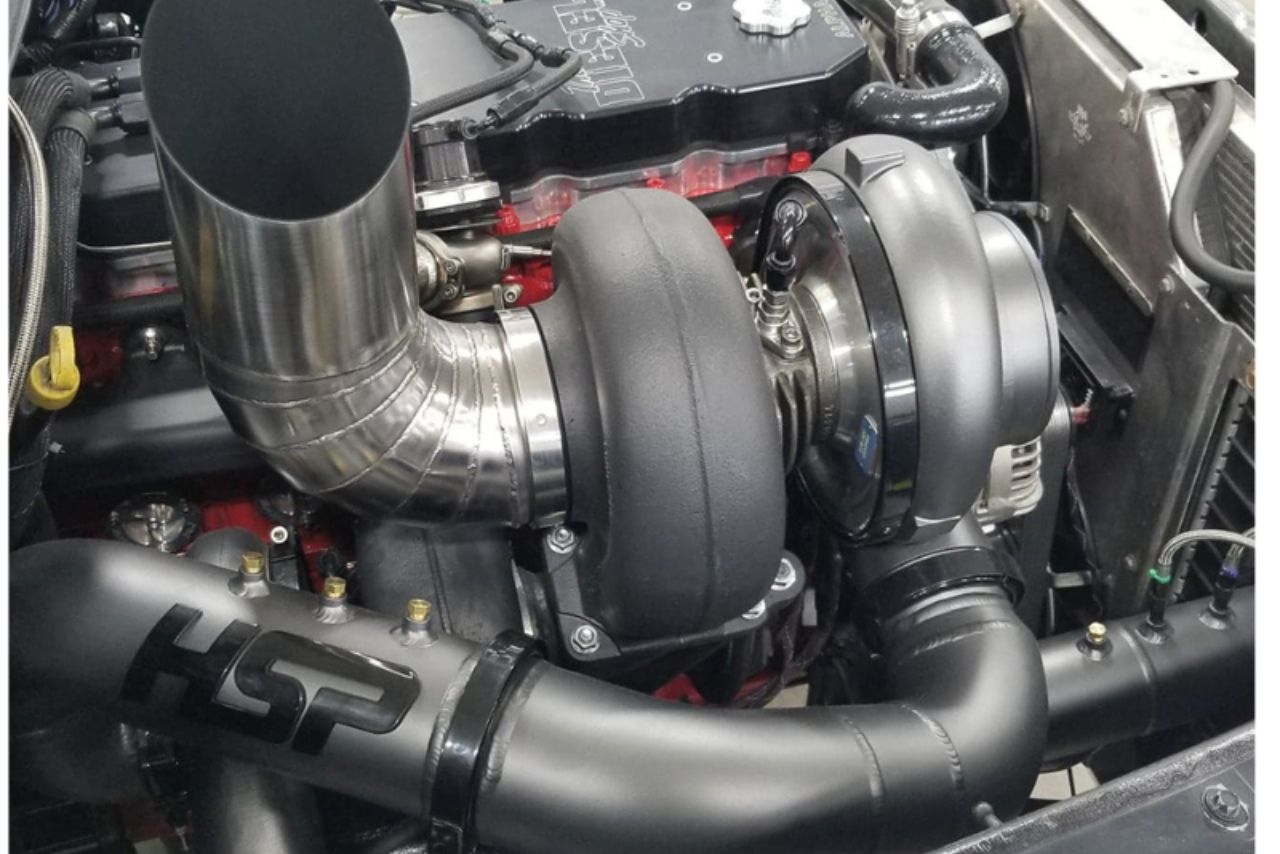
Are you looking to increase the power and performance of your four-cylinder engine? Have you considered twin-turbocharging as an option?
While many may think twin-turbocharging is only for larger engines, it is indeed possible to twin-turbo a four-cylinder engine, and it can lead to significant gains in power and torque.
Can You Twin-Turbo A Four-Cylinder?
Absolutely Yes, it is possible to twin-turbo a four-cylinder engine. However, it requires careful planning and modifications to ensure that the engine can handle the increased power and stress. Additionally, the cost of the turbocharging system and installation can be significant, and it may not always be the most practical or cost-effective option for improving performance.
Twin-turbocharging involves adding two turbochargers to an engine, which work together to increase the amount of air and fuel that enter the engine, resulting in more power.
While this process may seem daunting, with the right preparation and equipment, it is possible to successfully twin-turbo a four-cylinder engine.
In this article, we will guide you through the process of choosing the right engine, prepping it for twin-turbocharging, selecting the right kit, installing the turbochargers, tuning the engine, and performing maintenance and upkeep.
Understanding Twin-Turbocharging:
You can squeeze more power out of a four-cylinder engine by adding twin-turbocharging.
This uses two turbochargers to force more air into the engine and improve performance.
This is because a four-cylinder engine has limitations in terms of power output due to its smaller size.
Twin-turbocharging allows for a more efficient use of the engine’s potential.
Twin turbo advantages include improved engine responsiveness, better acceleration, and higher top speeds.
However, there are also some drawbacks to consider. One of the biggest drawbacks is the added cost of installing and maintaining two turbochargers.
Additionally, twin-turbocharging can put more strain on the engine, potentially leading to increased wear and tear and the need for more frequent maintenance.
Overall, the performance gains and drawbacks of twin turbocharging must be carefully weighed before deciding whether or not to pursue this modification for a four-cylinder engine.
Choosing the Right Four-Cylinder Engine:
When considering which four-cylinder engine to use, it’s important to take into account factors such as power output and fuel efficiency.
Four-cylinder engine modifications can be made to increase performance and power output, but it’s important to choose the right engine to start with.
Here are three factors to consider when choosing a four-cylinder engine for twin-turbocharging:
- Engine size: Typically, the larger the engine, the more power it can produce. However, a larger engine may also mean lower fuel efficiency. It’s important to strike a balance between power output and fuel efficiency when choosing an engine for twin-turbocharging.
- Engine design: The design of the engine can affect its performance potential. Engines with a higher compression ratio and a larger valve size may be better suited for turbocharging.
- Engine durability: Turbocharging can put additional stress on an engine. It’s important to choose an engine that can handle the increased pressure and heat that comes with turbocharging. Performance upgrades for four-cylinder engines can help increase power output and improve durability, but starting with the right engine is crucial for a successful twin-turbo setup.
Prepping Your Engine for Twin-Turbocharging:
To prep your engine for twin-turbocharging, it’s essential to focus on upgrading the fuel system, air intake, and exhaust components.
The fuel system upgrades are necessary to ensure that there is enough fuel supply to match the increased boost pressure. This can be achieved by upgrading the fuel pump, injectors, and fuel lines.
The air intake system also needs to be upgraded to provide sufficient air flow to the engine. This can be done by installing a high-performance air filter, larger diameter intake pipes, and a larger intercooler.
Apart from the fuel system and air intake upgrades, the exhaust system also needs to be upgraded. The exhaust system should be designed to allow the engine to breathe easily and efficiently.
This can be achieved by installing a larger diameter exhaust system, high-flow catalytic converters, and a performance muffler. Upgrading the exhaust system will help to reduce back pressure and improve the engine’s performance.
With these upgrades, your engine will be ready for twin-turbocharging, and you can expect significant power gains that will take your driving experience to the next level.
Selecting Twin-Turbocharger Kits:
When selecting twin-turbocharger kits for your engine, you’ll want to consider the types of kits available, compare brands and prices, and make an informed decision based on your specific needs.
There are a variety of kits on the market, each with their own unique features and benefits.
By comparing different brands and prices, you can ensure that you’re getting the best kit for your budget and performance goals.
Types of Kits Available:
You’ll be happy to know that there are a variety of kits available for twinning-turbo a four-cylinder engine, so you can easily boost your car’s performance.
One type of kit you can choose is a sequential twin-turbo system, which uses two turbos of different sizes to provide a more efficient and even boost.
The smaller turbo starts working first, delivering boost at lower RPMs, while the larger turbo comes in at higher RPMs to provide a stronger boost.
These kits usually come with intercooling options to keep the turbochargers and engine cooler, preventing overheating and damage.
Another option you can consider is a parallel twin-turbo system, which connects two identical turbos to the engine’s exhaust manifold.
This setup is more simple and cost-effective than a sequential system, but it may not provide as even a boost as the sequential system.
However, you can still expect a significant increase in power and torque with either type of twin-turbo system.
When selecting a kit, you’ll need to consider factors such as turbo sizing, intercooling options, exhaust routing, and fuel system upgrades to ensure that your engine can handle the additional boost.
Comparing Brands and Prices:
If you’re looking to add a twin-turbo system to your four-cylinder engine, evaluating the performance and reliability of different brands and prices is crucial.
One popular brand is Garrett, which offers a range of turbo sizes and configurations to fit various engine types.
Their turbochargers are known for their durability and efficiency, and they come with a one-year warranty. However, they can be quite expensive, with prices ranging from $1,700 to $4,500.
Another brand worth considering is Precision Turbo & Engine, which offers a wide range of turbo options for both street and racing applications.
Their turbochargers are known for their high performance and reliability, and they come with a two-year warranty.
Prices vary depending on the specific model, but they typically range from $1,500 to $5,000.
Ultimately, when comparing brands and prices, it’s important to consider both the performance and reliability of the turbo system, as well as your own budget and goals for your car’s performance.
Installing Twin-Turbochargers:
When it comes to installing twin-turbochargers, you have two options: professional installation or DIY.
Professional installation is often preferred as it can ensure that the job is done correctly and safely.
However, if you have experience and the necessary tools, DIY installation can be a viable option.
Common installation steps include removing the old turbocharger, installing the new turbochargers, and making necessary modifications to the engine and exhaust system for optimal performance.
Professional Installation vs DIY:
Go ahead and admit it, the idea of installing a twin-turbo on your four-cylinder engine sounds like a fun project, but it’s important to consider the potential risks and benefits of hiring a professional versus doing it yourself.
Here are some things to keep in mind:
- Professional installation may come with a higher price tag, but it also guarantees quality workmanship and expertise in the installation process.
- If you choose to go the DIY route, be prepared for a steep learning curve and potential mistakes that could end up costing you more in the long run.
- Professional installation may also offer warranties and guarantees on the work performed, giving you peace of mind and protection in case something goes wrong.
- Ultimately, the decision between professional installation and DIY will depend on your skill level, budget, and willingness to take on the risks and responsibilities of installing twin-turbos on your own.
When it comes to installing twin-turbos on a four-cylinder engine, there are pros and cons to both professional installation and DIY. While professional installation may offer more expertise and guarantees, it also comes with a higher cost.
On the other hand, DIY installation may be more cost-effective, but it requires a high level of skill and may result in costly mistakes.
Ultimately, the decision should be based on your individual needs, budget, and willingness to take on the risks and responsibilities of installing twin-turbos on your own.
Common Installation Steps:
Installing twin-turbos on a four-cylinder engine requires several common steps that can be easily accomplished with the right tools and knowledge.
One of the main advantages of a twin-turbo system is that it can help overcome the limitations of a four-cylinder engine, which typically lacks the power and torque of larger engines.
By forcing more air into the engine, twin-turbos can significantly increase horsepower and torque, resulting in a noticeable improvement in performance.
However, it’s important to consider the cost of installation when deciding to add twin-turbos to a four-cylinder engine.
Professional installation can be expensive, but doing it yourself can also be risky if you don’t have the necessary expertise.
Additionally, while the performance gains of a twin-turbo system can be significant, they may not be worth the cost if you don’t plan on using the car in a racing or high-performance setting. Ultimately, the decision to install twin-turbos on a four-cylinder engine should be made based on your specific needs and budget.
Tuning Your Engine for Performance:
To get the most out of your engine’s performance, you should consider tuning it for optimal power and efficiency.
It’s important to note that high-performance engines are beneficial not only for racing enthusiasts but also for everyday drivers.
A well-tuned engine can improve fuel economy, increase horsepower, and reduce emissions.
Here are some factors to consider when tuning your engine for performance:
- Upgrading your air intake system can help increase airflow to your engine, resulting in improved fuel efficiency and horsepower.
- Replacing your exhaust system with a high-performance one can help reduce backpressure, allowing for a smoother and faster flow of exhaust gases.
- Upgrading your engine’s management system can help optimize fuel delivery, ignition timing, and other engine parameters for better performance.
- Installing a turbocharger or supercharger can increase the amount of air and fuel entering the engine, resulting in more power and improved acceleration.
By considering these factors and tuning your engine accordingly, you can achieve optimal performance and efficiency from your twin-turbo four-cylinder engine.
Test Driving and Fine-Tuning:
Now that you’ve tuned your four-cylinder engine for performance, it’s time to take it for a test drive and fine-tune it further.
Test driving is an essential step in determining whether your engine is running smoothly or not.
During the test drive, you’ll have the opportunity to check if the engine is responding well to the changes you’ve made.
The test drive experience will also allow you to identify areas that need improvement, such as excessive noise, poor acceleration, or rough idling.
Once you’ve identified the areas that need improvement, you can begin fine-tuning your engine.
Fine tuning benefits include improved performance, better fuel efficiency, and reduced emissions.
You can fine-tune your engine by making small adjustments to the fuel injection system, adjusting the air intake, or modifying the exhaust system.
It’s important to make one change at a time and test the engine after each adjustment to ensure that you’re making progress. By fine-tuning your engine, you can achieve the optimal balance between power and efficiency, making your four-cylinder engine a true powerhouse.
Maintenance and Upkeep:
Now that you’ve test driven and fine-tuned your vehicle, it’s important to maintain it properly to ensure it stays in peak condition.
Regular maintenance requirements include oil changes, tire rotations, and brake inspections.
It’s also important to know how to troubleshoot common issues such as a check engine light or strange noises coming from your car.
By staying on top of maintenance and addressing issues promptly, you can avoid costly repairs down the line and keep your vehicle running smoothly.
Regular Maintenance Requirements:
You’ll want to keep up with regular maintenance if you’re considering twin-turboing your four-cylinder engine, as it will require more attention and care to keep it running smoothly.
Regular maintenance requirements for a twin-turbo four-cylinder engine include oil changes, spark plug replacements, and air filter cleanings.
Failing to keep up with these requirements can lead to decreased performance and potential engine damage.
To ensure the longevity of your twin-turbo four-cylinder engine, it’s important to avoid common maintenance mistakes.
One mistake is using the wrong type of oil, which can lead to engine damage or even failure. Another mistake is neglecting to replace the air filter, which can cause reduced air flow and decreased performance.
Finally, not keeping up with regular tune-ups can also lead to decreased performance and potential engine damage.
By following the recommended maintenance schedule and avoiding common mistakes, you can keep your twin-turbo four-cylinder engine running smoothly and at peak performance.
| Maintenance Requirement | Frequency | Cost |
|---|---|---|
| Oil Change | Every 5,000 miles or 6 months, whichever comes first | $50-$100 |
| Spark Plug Replacement | Every 30,000 miles or 3 years, whichever comes first | $100-$300 |
| Air Filter Cleaning | Every 10,000 miles or 1 year, whichever comes first | $20-$50 |
| Tune-Up | Every 60,000 miles or 5-6 years, whichever comes first | $200-$500 |
Troubleshooting Common Issues:
If you’re experiencing engine troubles, don’t panic – there are common issues that can be easily troubleshooted with a little bit of knowledge and effort.
One of the most common problems with a twin-turbo four-cylinder engine is boost leaks.
Boost leaks can occur when there is a crack or hole in the intake system, causing the turbochargers to lose pressure and not deliver the desired amount of power.
To identify a boost leak, you can visually inspect the intake system for any cracks or holes, and also use a boost pressure tester to identify any leaks in the system.
Another common issue is oil leaks. Oil leaks can occur due to a variety of reasons, including failing gaskets, worn seals, or damaged components.
To troubleshoot an oil leak, start by identifying the source of the leak.
This can be done by inspecting the engine for any visible signs of oil leakage, or by using a dye and UV light to identify the source of the leak.
Once the source of the leak is identified, the necessary components can be replaced or repaired to stop the leak.
By following these troubleshooting tips, you can easily identify and fix common problems with your twin-turbo four-cylinder engine.
Frequently Asked Questions:
What is the cost of twin-turbocharging a four-cylinder engine?
Twin-turbocharging a four-cylinder engine can cost between $5,000 and $10,000, depending on the quality of the turbos and installation process. The cost breakdown includes the price of the turbos, intercooler, piping, and labor. The installation process can take up to a week and involves removing the engine and modifying the exhaust and intake systems.
How does twin-turbocharging affect the fuel efficiency of a four-cylinder engine?
Twin-turbocharging can improve fuel efficiency in a four-cylinder engine by reducing turbo lag, allowing for quicker acceleration. However, it may also shorten engine lifespan if not properly maintained, as the added stress can cause wear and tear.
Can twin-turbocharging a four-cylinder engine cause any long-term damage to the engine?
Potential engine modifications for twin turbocharging a four-cylinder engine can cause long-term damage if not properly installed and maintained. However, the benefits of twin turbocharging for racing applications can increase horsepower and torque output significantly.
Are there any legal restrictions on twin-turbocharging a four-cylinder engine?
When considering twin-turbocharging a four-cylinder engine, it’s important to be aware of any legal considerations. Additionally, it’s important to compare the potential performance gains against the possible impact on the engine’s longevity.
How does twin-turbocharging affect the overall performance of a four-cylinder engine compared to a six-cylinder engine?
Twin-turbocharging a four-cylinder engine can improve its performance by reducing turbo lag and increasing power output. Compared to a six-cylinder engine, the advantages of twin turbocharging over single turbocharging are greater due to the smaller engine size.
Conclusion: Can You Twin-Turbo A Four-Cylinder?
Congratulations, you’ve successfully twin-turbocharged your four-cylinder engine!
With the right engine selection, preparation, and installation of the right twin-turbocharger kit, your car can experience a significant increase in power and performance.
Remember to properly maintain and upkeep your engine to ensure its longevity and continued performance. Regularly check your oil levels, change your oil and filters, and monitor your engine’s performance.
With proper care, your twin-turbocharged four-cylinder engine can be a reliable and powerful machine for years to come.
So go ahead, hit the road, and enjoy the thrill of driving your newly modified car!

